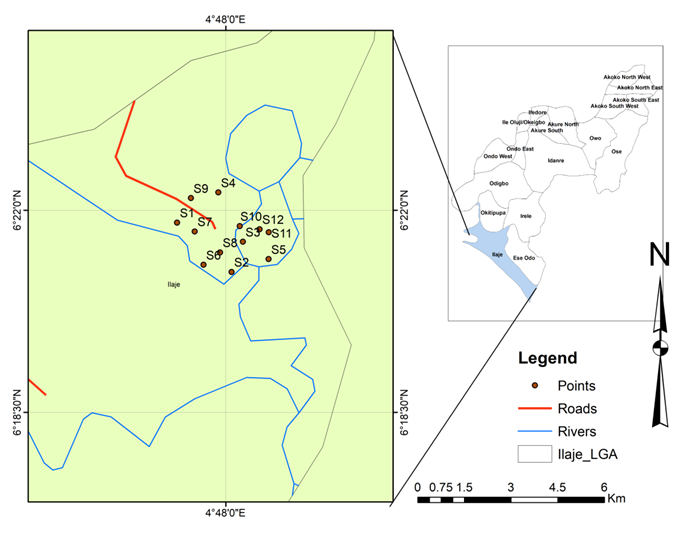Radiometric investigation of naturally occurring radionuclides in soils from Igbokoda, a coastal area in Ondo State Nigeria
Keywords:
Igbokoda , NaI(TI), Natural radionuclide, radiological risk, SoilAbstract
The activity concentration of naturally occurring radionuclides was evaluated in soil samples collected from Igbokoda, a coastal area of Ondo state in Southwest Nigeria, using a NaI(TI) detector. According to the results, the average levels of 238U, 232Th, and 40K present in the soils are 37.63 ± 3.82, 23.20 ± 2.55, and 657.17 ± 45.15 Bq·kg-1, respectively. The radiological results from Igbokoda, Nigeria, offer a varied comparison with other coastal regions. While 238U and 232Th levels in Igbokoda are within global averages and generally lower than in some areas, the 40K levels are significantly higher, leading to an elevated radium equivalent activity (Raeq). Despite this, Raeq remains below the global safety threshold. Following the computation of the mean radiological risks, the reported values are absorbed gamma dose rate: 57·684 nGy·h-1; annually effective dose rate: 70.744 µSv·y-1; representative level index: 0.921; and radium equivalent: 121.413 Bq·kg-1, respectively. The study results demonstrate that the population’s radiation exposure resulting from the reported concentration of radionuclides in the soil of the study area is less than the levels recommended by global organizations. Therefore, the soil in the study region will not endanger the public. Nonetheless, more research is required to estimate the radionuclide concentration in the agricultural produce cultivated in the study area.

Published
How to Cite
Issue
Section
Copyright (c) 2024 Abiola Olawale Ilori, Funmilola Mabel Ojo, Kayode Olayele Karigidi

This work is licensed under a Creative Commons Attribution 4.0 International License.







